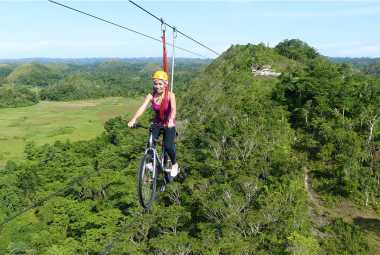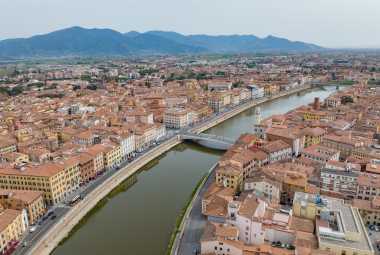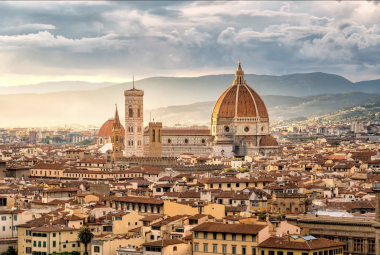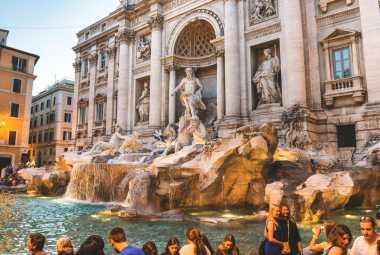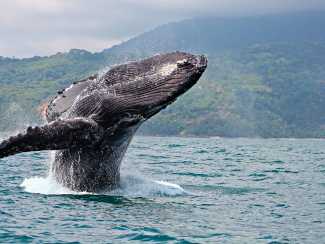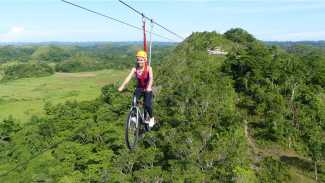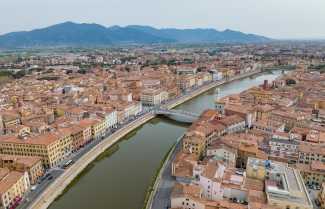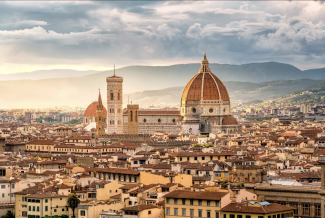Image by en.wikipedia.org
*Vacation Mode is a for-profit site. It contains paid banner advertisements that are generated and managed by a third-party network. This site also includes relevant affiliate links (both in the content and on the sidebar) all of which we do our best to clearly mark as such.
Costa Rica and Guatemala are two stunning countries in Central America, offering different experiences. Costa Rica has lush rainforests, stunning beaches, and astonishing biodiversity, pleasing nature lovers. Guatemala mesmerizes visitors with its Mayan ruins, indigenous culture, and magnificent landscapes.
In Costa Rica, you can zip-line through dense forests or surf in crystal-clear waters. It is a hub for sustainable tourism, with national parks like Manuel Antonio and Tortuguero, where you can discover diverse flora and fauna.
Guatemala immerses travelers in its history. The grand Mayan ruins of Tikal tell tales of an old civilization. Antigua Guatemala is a glimpse into colonial times with its well-preserved buildings and cobblestone streets. Lake Atitlán is a sight to behold with its beauty and peaceful atmosphere.
Before visiting, research the customs and traditions of both countries. This will help you have a respectful and enjoyable experience, familiarizing you with local cultural nuances. Costa Rica or Guatemala, prepare to be amazed by their natural wonders and cultural heritage!
Similarities between Costa Rica and Guatemala
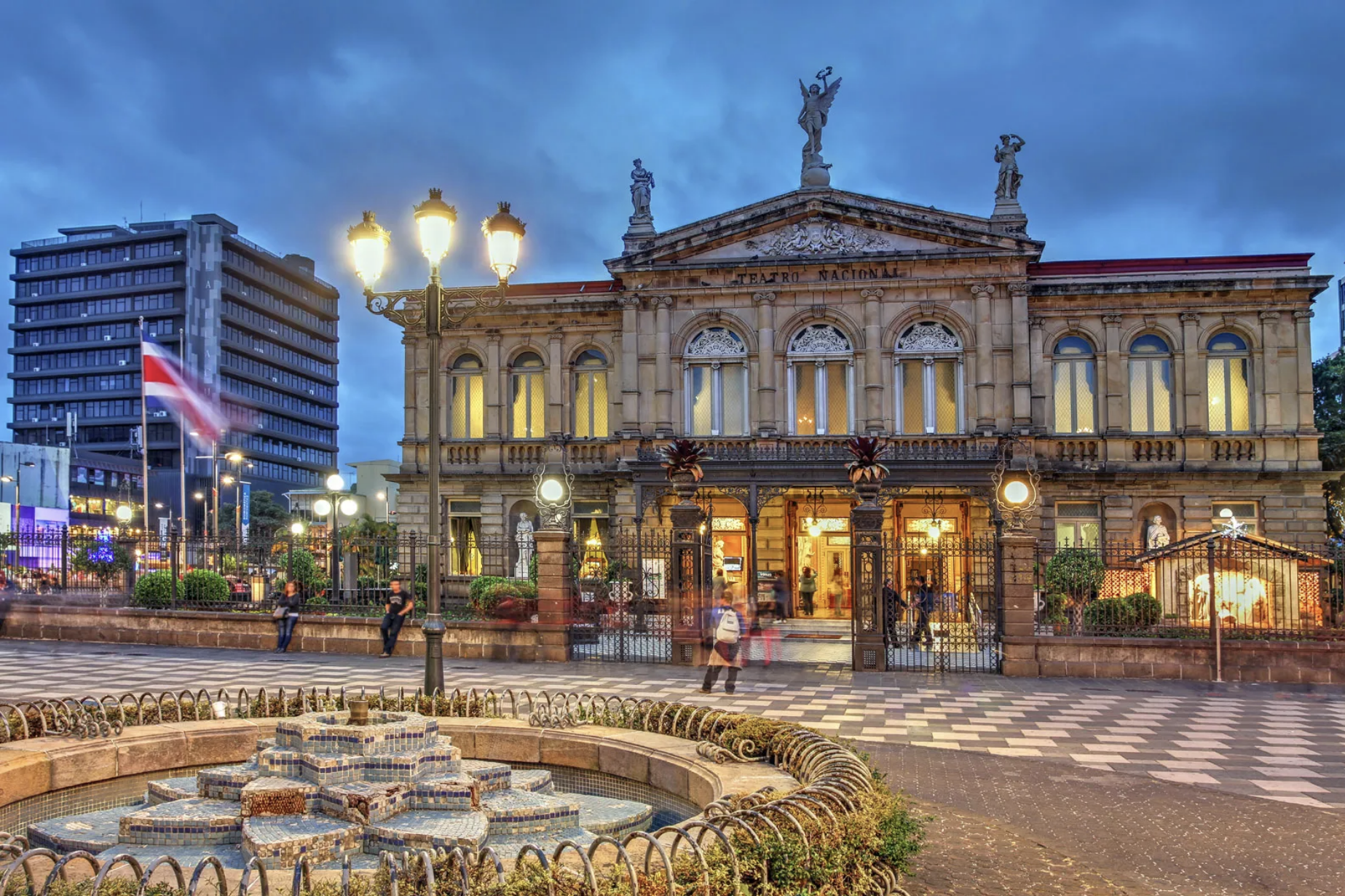
Costa Rica and Guatemala: Uncovering the Similarities
Costa Rica and Guatemala, two Central American countries, share various similarities. Let's explore some of these commonalities that contribute to their cultural, historical, and geographical connections.
- Rich Biodiversity: Both countries boast an impressive array of flora and fauna, with vibrant rainforests, tropical jungles, and diverse ecosystems.
- Mesoamerican Origins: Costa Rica and Guatemala are home to Mesoamerican civilizations, showcasing fascinating archaeological sites and ancient ruins.
- Colonial Heritage: Both nations have a prominent Spanish colonial influence, evident in their architecture and cultural traditions.
- Coffee Culture: Costa Rica and Guatemala have long been renowned for their coffee production, with beans cultivated in the lush mountainous regions.
- Celebrating Indigenous Heritage: Indigenous cultures are celebrated and preserved in both Costa Rica and Guatemala, with traditional festivals and rituals.
- Natural Wonders: From the volcanic landscapes of Arenal to the ancient Mayan ruins of Tikal, these countries offer captivating natural wonders for exploration.
In addition to these similarities, Costa Rica and Guatemala each have their unique characteristics and attractions that set them apart. For instance, Costa Rica is renowned for its progressive environmental policies and ecotourism initiatives, while Guatemala captivates visitors with its indigenous markets and colorful traditional textiles.
Connecting across borders, a remarkable story emerges. A tourist from Costa Rica, exploring the bustling markets of Guatemala City, stumbled upon a stall selling intricately woven handicrafts. Engaging with the Guatemalan artisan, they discovered shared techniques and patterns used by indigenous groups in both countries. The cultural exchange deepened their appreciation for the intricate art forms and fostered a connection between their respective communities.
Costa Rica and Guatemala's shared facets and distinctive elements paint an enriching picture of their interconnectedness. Though unique in their own right, these countries embrace their historical ties and cultural overlaps, inviting visitors to experience the rich tapestry they have to offer.
A trip from Costa Rica to Guatemala is like going from paradise to 'Guatemaya' - land of volcanoes, ancient ruins, and an astonishing amount of speed bumps.
Geography
Costa Rica and Guatemala boast captivating landscapes with lush rainforests, stunning coastlines, and towering volcanic peaks. Let's explore their similarities in a table format!
| Category | Costa Rica | Guatemala |
|---|---|---|
| Size | 51,100 square kilometers | 108,889 square kilometers |
| Capital | San Jose | Guatemala City |
| Coastline | Both countries on the Pacific Ocean and Caribbean Sea | Both countries on the Pacific Ocean and Caribbean Sea |
| Mountain ranges | Cordillera de Talamanca, Guanacaste Range | Sierra Madre |
| Volcanoes | Arenal, Irazu, Poas | Tajumulco, Fuego |
Costa Rica is well-known for its biodiversity. Even though it's small, it holds 5% of the world's biodiversity. Guatemala has the beautiful Lake Atitlan, an ancient caldera lake surrounded by picturesque villages.
Don't miss out on exploring these two countries' breathtaking coastlines, mystical volcanoes, and vibrant wildlife. Plan your journey now! Experience the wonderment firsthand on an unforgettable adventure through Costa Rica and Guatemala—nature's gifts await you!
Climate
Costa Rica and Guatemala both have a tropical climate. The yearly temperature typically ranges between 70-90°F, making it warm all year. Humidity levels are high, especially during the wet season. From May to November, heavy rainfall and thunderstorms are common. This water helps support the lush vegetation in both countries.
Also, the climate influences biodiversity. Rainy weather means more dense rainforests and diverse ecosystems.
To make the most of the climates in both countries, consider these tips:
- Wear light, natural-fiber clothing. Bring waterproof jackets for wet season.
- Plan outdoor activities during dry season.
- Stay hydrated - bring a reusable bottle.
Follow these suggestions for a great time in Costa Rica and Guatemala. Enjoy the climate similarities and all the nature these countries offer!
Biodiversity
Costa Rica and Guatemala boast biodiversity that is sure to amaze. Costa Rica has over half a million species, 10% of all butterflies, plus jaguars, sloths, and quetzals. Guatemala has 800+ bird species, reptiles, and rare, colorful orchids.
The Osa Peninsula in Costa Rica features marine life and endangered hawksbill turtles. Tikal National Park in Guatemala is home to jaguars and spectacular Mayan ruins.
In Monteverde Cloud Forest Reserve, I saw bromeliads, mosses, ferns, and trees living in harmony. A beautiful example of nature's delicate balance!
Costa Rica and Guatemala offer vibrant landscapes full of life. An explorer's dream!
Differences between Costa Rica and Guatemala
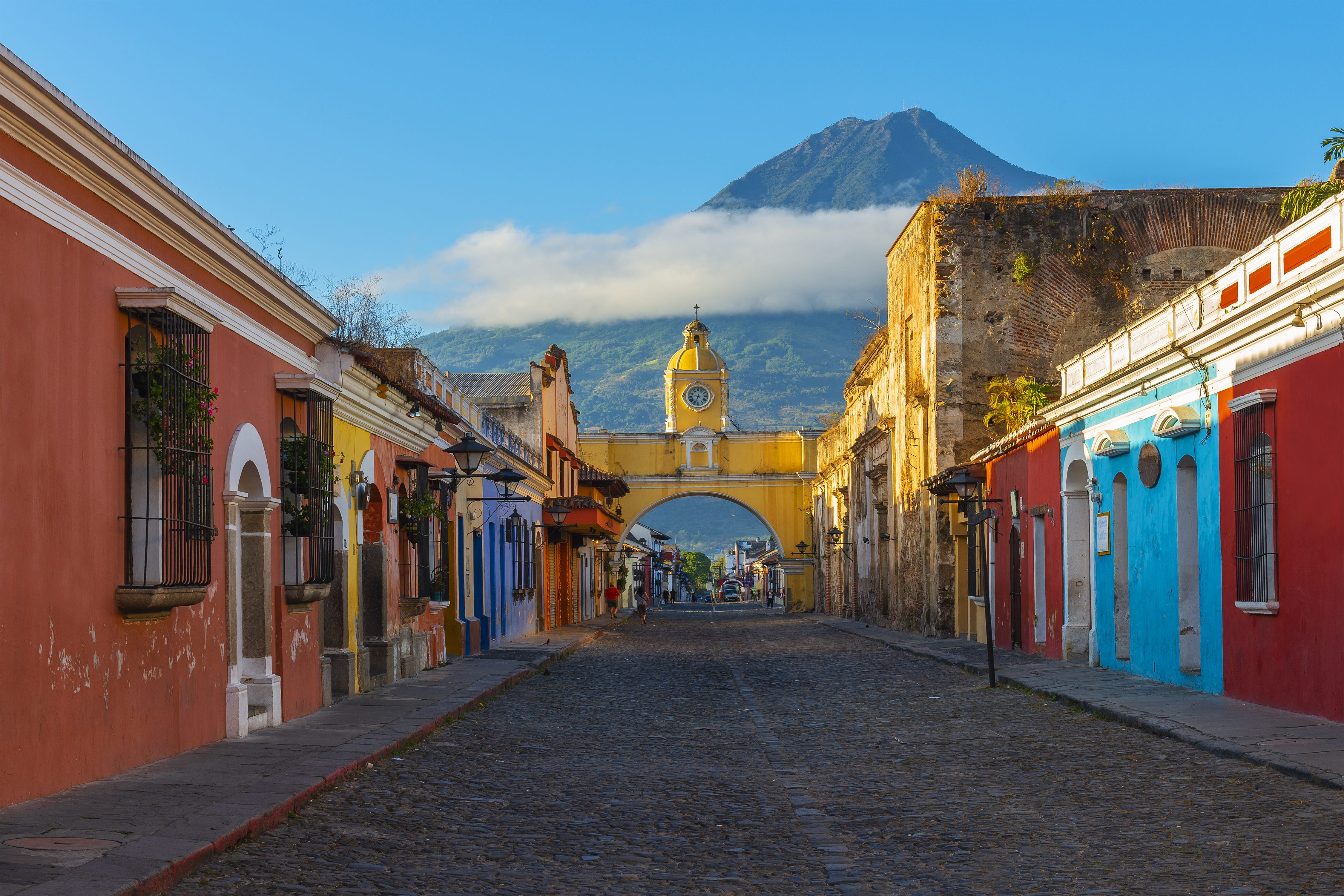
To understand the differences between Costa Rica and Guatemala, explore their contrasting aspects. Discover the unique culture, language, and tourist attractions that set these two Central American countries apart.
Culture
Costa Rica and Guatemala offer unique cultural experiences for visitors. Here are some tips to explore them:
- Language: Costa Rica's official language is Spanish, while Guatemala has 21 officially recognized languages, with Spanish being the most spoken.
- Religion: Catholicism is predominant in Costa Rica, and in Guatemala a portion of the population follows indigenous Mayan beliefs alongside it.
- Food: Costa Rica's traditional dishes revolve around rice and beans. In Guatemala, corn, chilis, and plantains are often used in recipes.
- Festivals: Costa Rica celebrates its independence with "El Día de la Independencia." In Guatemala, traditional dances like the "Dance of the Conquest" are seen in festivals.
- Art and Crafts: Guatemalan artisans are known for their weaving techniques and textiles. Costa Rican artisans craft wooden masks and pottery.
To get a deeper cultural understanding, immerse yourself in activities and festivals that locals take part in. Engage with artisans to support craftsmanship. And, try local cuisine to get a taste of the country's history.
Language
In Costa Rica, Spanish is the most commonly spoken language. But, there are also some indigenous languages like Bribrí and Cabécar, spoken by minority groups.
Guatemala too has Spanish as its official language, but it is also home to 23 different Mayan languages! These include K'iche', Kaqchikel, and Q'eqchi'.
It's evident that Spanish is mostly used for official communication in both countries. Yet, Guatemala has a wide range of indigenous languages.
For a great experience on your travels, learn some Spanish phrases. Show respect for the local languages and cultures, to build meaningful connections.
Tourist Attractions
Costa Rica's Manuel Antonio and Tortuguero National Parks boast breathtaking wildlife and lush rainforests. Guatemala's Tikal National Park is home to colossal Mayan temples that take visitors back in time.
Costa Rica's Arenal Volcano offers a stunning view and thrilling activities like hiking and zip-lining. Antigua in Guatemala mesmerizes with its well-preserved Baroque architecture and vibrant culture.
Monteverde Cloud Forest Reserve in Costa Rica is a mystical paradise, teeming with exotic flora and fauna. Guatemala's Lake Atitlan entices travelers with its serene beauty and traditional lakeside villages.
Plus, Costa Rica's famous hot springs offer relaxation amidst stunning natural surroundings. Guatemala's Lake Peten Itza dazzles with breathtaking sunsets.
For a truly unforgettable experience, explore Monteverde Cloud Forest Reserve in Costa Rica. Immerse in the enchanting beauty and learn about unique ecosystems with knowledgeable guides. Or, visit Tikal National Park in Guatemala to discover captivating stories behind each monumental structure.
Both countries offer a variety of attractions - whether you're seeking adventure or cultural immersion.
Advantages of Visiting Costa Rica
To discover the advantages of visiting Costa Rica, delve into its stunning beaches, abundant ecotourism opportunities, and emphasis on safety. With these sub-sections as your guide, you'll explore the diverse natural beauty, engage in sustainable adventures, and feel secure throughout your Costa Rican travel experience.
Beaches
Discover Costa Rica's oceanic treasures! From Playa Manuel Antonio with its white sand and crystal-clear waters, to Punta Uva's secluded shores surrounded by lush rainforests, to Santa Teresa's world-class surf spots, to Tamarindo's vibrant nightlife - there is something for everyone along the coast.
If you're looking to make the most of your beach experience, consider renting a kayak or paddleboard to explore coves and mangroves, take a guided tour to learn about the country's biodiversity, try ceviche or grilled fish at beachfront restaurants, and don't forget your sunscreen! It'll be an unforgettable journey full of natural beauty and culture.
Ecotourism Opportunities
Costa Rica offers a multitude of ecotourism possibilities! Immerse yourself in the country's lush biodiversity and amazing natural landscapes.
- Go to rainforests and spot special wildlife like monkeys, toucans, and jaguars.
- Hike volcanoes and be amazed at their power and beauty.
- Do exciting activities like zip-lining or whitewater rafting.
- Find hidden waterfalls in the jungle, perfect for swimming or admiring.
- Connect with local communities and learn about conservation.
Costa Rica stands out for its 98% renewable energy. Plus, it has 5% of the world's biodiversity in a small size. 25% of its land is protected as national parks or reserves.
Monteverde Cloud Forest Reserve is a great example. It was made in 1972 by Quakers to save the forest from deforestation. Now, it's a popular spot for nature lovers.
Costa Rica's abundant ecotourism opportunities make it a must-see destination. Adventure seekers and nature lovers alike will find something to marvel at!
Safety
In Costa Rica, safety is a big deal. Crime rates are low and the country has a steady political atmosphere. Tourists can feel safe to explore the different landscapes and do activities. Here are the key safety points for visitors in Costa Rica:
- Low Crime Rates: Costa Rica has lower crime rates than other Latin American countries.
- Stable Politics: The country is politically stable, creating a secure environment for tourists.
- Friendly Locals: Costa Ricans are known for being hospitable. People are welcoming and ready to help.
What's more, tourist police patrol popular spots to guarantee the safety of visitors. For extra security, here are some tips:
- Listen to locals: Get advice from reliable sources like hotel staff or tour operators.
- Secure your stuff: Even though theft rates are low, it's smart to watch your belongings and use lockers or safes when available.
- Stay up-to-date: Check with your country's embassy or consulate in Costa Rica for travel alerts or advisories.
By following these tips, you can stay safe while you have fun in Costa Rica. It's always important to be aware of where you are and what's happening around you.
Advantages of Visiting Guatemala
To fully experience the unique beauty of Guatemala, immerse yourself in the advantages it has to offer. Discover the ancient mysteries of Mayan Ruins, embrace the vibrant richness of its Indigenous Culture, and embark on affordable travel that won't break the bank. Each sub-section holds its own allure, promising an unforgettable journey through Guatemala's wonders.
Mayan Ruins
The Mayan ruins of Guatemala give us a peek into the prosperous culture and past of the Mayan people. These ruins are everywhere in the country, and they fascinate visitors with their beauty and mystery.
As you explore them, you feel as if you have gone back in time to when the Mayans were in their prime. The intricate stone carvings and grand structures show their skill in engineering and art.
The Mayan ruins also tell us much about their beliefs and social structures. Each ruin, from Tikal's high pyramids to Copan's ornate stelae, has its own story that helps us know more about this amazing civilization.
One example is El Mirador. It's a forgotten city in the jungle and was one of the biggest cities on the planet. It played a big role in Mayan politics and its temples and palaces have clues to rivalries and power struggles between dynasties.
Visiting these Mayan ruins helps us understand their importance historically and culturally. Exploring them helps us appreciate the Mayans' relationship with nature, their complex calendars, and their respect for cosmic powers.
So why Guatemala? Its Mayan ruins are the answer. They are gorgeous remnants that keep secrets of days gone by. Take a trip through time as you uncover the secrets of this ancient culture.
Rich Indigenous Culture
Guatemala's indigenous culture dazzles visitors with its vibrancy and diversity. Maya crafts, dance, and clothing are all on show. Ancient ruins like Tikal offer a glimpse into the past. Colorful religious festivals and traditional ceremonies immerse travelers in the captivating world of Guatemalan indigenous culture. Markets, and Mayan languages still heard today, embrace this heritage. Immerse yourself for an unforgettable experience!
Discover unique cultural encounters in Guatemala, not found anywhere else. Go to Chichicastenango village; locals gather there to sell artisanal products every Thursday and Sunday. Enjoy traditional Mayan rituals, and local cuisine like tamales and chiles rellenos. Alternatively, visit Lake Atitlan. Its shores have distinct Mayan character. Experience genuine traditions preserved for generations.
Pro Tip: Attend a local ceremony or festival for an intimate glimpse into age-old traditions. Interact with friendly locals, eager to share customs and beliefs.
Affordable Travel
Visiting Guatemala offers a plethora of advantages, one of which is affordable travel! You can explore the beauty and culture of this Central American gem without breaking the bank. Here are some ways to save money:
- Accommodations for every budget: From luxurious resorts to cozy guesthouses.
- Cheap transportation: Buses, taxis, tuk-tuks.
- Yummy street food: Tasty & inexpensive!
- Free or low-cost attractions: Ancient Mayan ruins, volcanoes, markets.
- Bargaining opportunities: Get great deals on handicrafts & souvenirs.
- Adventure at an affordable price: Zip-lining, jungle treks, white-water rafting.
Plus, you can delve deeper into Guatemala's vibrant indigenous cultures. Witness traditional ceremonies, learn ancient crafts, gain a deeper understanding of the country's heritage.
Pro Tip: Visit during the off-peak season for lower prices & fewer crowds.
Conclusion
Costa Rica and Guatemala have their own unique qualities. Both countries have diverse ecosystems, rich cultural heritage, and thriving tourism industries. Costa Rica is renowned for its picturesque landscapes, like rainforests, volcanoes, and beaches. It has made investments in sustainable tourism and conservation. Guatemala also stands out for embracing its Mayan heritage and colonial history. Ancient ruins such as Tikal and Antigua Guatemala give visitors a glimpse into the country's past.
To make these countries even more attractive to travelers, we suggest:
- Promoting community-based tourism initiatives. This would let visitors engage with locals and support local economies.
- Investing in infrastructure improvements, such as reliable transportation networks and upgraded accommodations.
- Creating educational programs focused on sustainability. This would help tourists understand the importance of responsible travel practices. It could include activities like carbon offsetting or volunteer projects.
Frequently Asked Questions
1. Q: What are the main differences between Costa Rica and Guatemala?
A: Costa Rica and Guatemala differ in various aspects. Costa Rica is known for its lush rainforests, eco-tourism, and focus on sustainability. Guatemala, on the other hand, offers rich ancient Mayan history, colonial architecture, and vibrant indigenous cultures.
2. Q: Is Costa Rica safer than Guatemala for tourists?
A: While both countries have their own safety concerns, Costa Rica generally has a lower crime rate compared to Guatemala. Costa Rica is often considered a safer destination for tourists with well-developed tourism infrastructure and a history of political stability.
3. Q: Which country offers better beaches, Costa Rica or Guatemala?
A: Costa Rica boasts a stunning coastline with beautiful beaches on both the Pacific and Caribbean sides. Guatemala, however, has only a small stretch of coastline along the Pacific Ocean. Therefore, Costa Rica is often considered the better choice for beach lovers.
4. Q: Can you see volcanoes in both Costa Rica and Guatemala?
A: Yes, both Costa Rica and Guatemala have volcanoes that attract tourists. Costa Rica is famous for its Arenal Volcano and Poas Volcano, while Guatemala offers the majestic Pacaya Volcano and the active Fuego Volcano among others.
5. Q: Are there any cultural similarities between Costa Rica and Guatemala?
A: Both Costa Rica and Guatemala have a rich indigenous culture that is reflected in their arts, crafts, and traditional festivals. Both countries also have Spanish as their official language, although Guatemala has a larger indigenous population with multiple Mayan languages spoken.
6. Q: Which country is more affordable to visit, Costa Rica or Guatemala?
A: In general, Guatemala is considered more affordable for tourists compared to Costa Rica. The cost of accommodation, transportation, and food is relatively lower in Guatemala, making it an attractive destination for budget travelers.
Things to do in Costa Rica
Things to do in Guatemala



